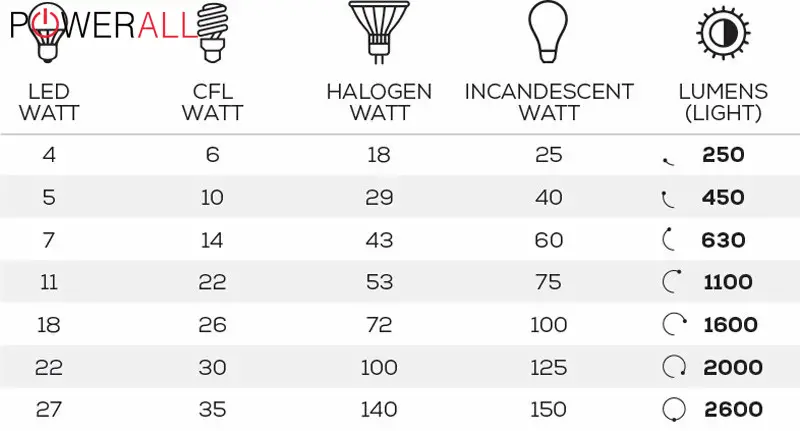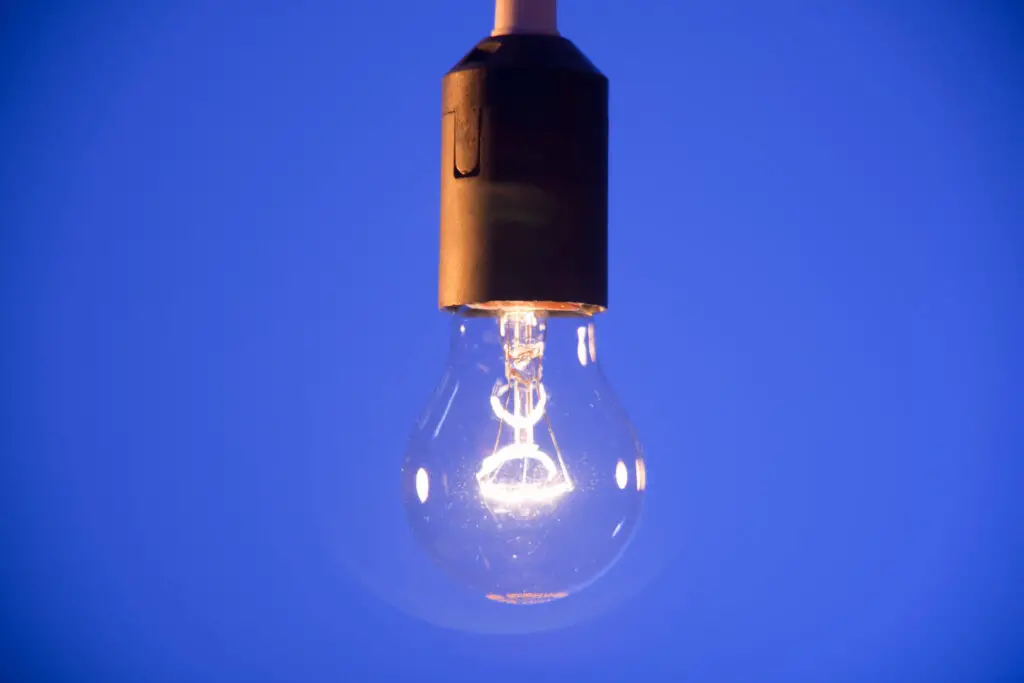With the growing popularity of energy-efficient modern LED bulbs and the phasing out of traditional incandescent bulbs, it’s important to understand the relationship between watts and lumens.
And 60W bulbs are the most used one in households. Learn more about the number of lumens in a 60-watt bulb with this post!
About Lumens And Wattage
Lumens are a measurement of the total amount of visible light emitted by a light source. In other words, lumens describe how bright a light is. The higher the number of lumens, the brighter the light.
Wattage, on the other hand, is a measurement of the amount of electrical power that a light bulb uses. In the past, this number was often used as a brightness indicator, with higher-wattage bulbs being assumed to be brighter.
However, with the advent of more energy-efficient bulbs like LEDs, wattage is no longer an accurate indicator of brightness.

While lumens and wattage are related, they are not interchangeable. A bulb with a higher lumen output will be brighter regardless of its wattage.
Meanwhile, a bulb with a higher wattage will use more energy, irrespective of its lumen output. When shopping for light bulbs, lumens and wattage are both crucial factors to take into account so you can select one with desired brightness level and energy savings.
Converting LED Lumens To Watts
How can you convert watts to lumens and vice versa? Converting lumens to watts can be tricky, as they measure different things. Traditional bulbs were only 15 lumens per watt, while modern bulbs can offer up to 100 lumens, making them much more efficient.
To replace an old 60-watt bulb with an LED, divide the wattage by 5 to get the wattage needed. It typically produces 800 lumens, so choose a bulb that offers 800 lumens to replace it.
How Many Lumens In A 60 Watt Bulb?
A 60 watt incandescent bulb typically produces around 800 lumens. The lumen measure signifies the total amount of visible light emitted by a light source, and the number of lumens produced by a bulb depends on its efficiency in converting electrical power into visible light.
That said, it’s important to note that different types of bulbs may vary in their lumen output, and the wattage of a bulb is not always a reliable indicator of its brightness.
For example, LED bulbs can produce the same amount of intensity as a 60 watt bulb lumens with much lower wattage, typically around 9 to 13 watts.
This is because LED technology is much more efficient in converting electrical power into visible light than its incandescent counterpart.
When choosing a bulb, it’s best to consider the lumens rather than just the wattage to ensure that you’re getting the desired level of brightness for your needs. The higher the lumens, the brighter the light will be.
How Bright Is A 60W Bulb?
The brightness of a 60-watt bulb varies depending on the bulb type and its efficiency, but typically it produces around 800 lumens of light output.

In terms of the perceived brightness, 800 lumens to watts can be compared to the amount of light produced by a street lamp or a bright room with several overhead light fixtures.
You can use this light bulb in bathrooms, kitchens, bed rooms, or other small spaces.
How To Get A 60W Equivalent Bulb
You can check an LED light bulb’s lumen output on the packaging when making your selection. This is compared directly to conventional incandescent bulbs, which put off less light.
For instance, a box of A19 LED bulbs might specify that it has 800 lumens. This indicates that it produces an amount of light comparable to a 60W incandescent lumens light bulb. Go for the LED light bulb with an output of 800 lumens if you want it to be as bright as a 60w bulb.
A light bulb that is marketed as a “60-watt replacement bulb” or a “60W equivalent bulb” may also come in handy.
Simply said, this indicates that it produces an equivalent amount of light to a conventional incandescent 60-watt bulb, though with different wattage. Just keep in mind that the amount of power the LED light bulb consumes isn’t disclosed by this.
Remember to never attach a light bulb with higher watt than what your fixture can accommodate. This is the shortest way to overheat the bulb, melt the socket and the wire coating. And an electric shock or a fire is on the horizon at this point.
Amount Of Lumens You Need For Different Places
The amount of lumens needed for different places depends on the purpose of the space and the personal preferences of the individuals using the space.
Here are some general guidelines for common areas so that you can calculate the number of 60W bulbs accordingly.
- Living room: A living room typically requires between 1,500 to 3,000 lumens. If the living room is used for reading or other tasks that require more lighting, you may need to increase the lumens.
- Kitchen: A kitchen needs between 3,000 to 6,000 lumens, as it is a space that requires bright and functional lighting for cooking and preparing food.
- Bedroom: A bedroom generally needs between 1,000 to 2,000 lumens, with dimmer lighting preferred for a more relaxing environment.
- Bathroom: A bathroom needs between 4,000 to 8,000 lumens, as it is a space where luminous lighting is important for grooming and personal care.
- Office: An office needs between 3,000 to 6,000 lumens, with task lighting that is brighter and focused on work areas.
Frequently Asked Questions
Can I Replace 60 Watt Bulbs With 100 Watt LED?
Yes. Although you can replace a 60-watt incandescent bulb with a 100-watt LED bulb, it is not recommended to do so. This is because the wattage of a bulb indicates the electric power consumption.
As mentioned, using a bulb with a higher wattage than what the fixture is designed for can be dangerous and potentially lead to overheating, fire hazards, and damage to the institution or wiring.
Is A 60W LED Bulb Actually 60W?
No, a 60 watt LED bulb is not actually 60 watts. The associate wattage rating of a bulb refers to the amount of power it consumes, and LED bulbs are much more energy-efficient than standard bulbs.
While a 60 watt incandescent bulb consumes 60 watts of power, an LED bulb that produces the same amount of light may only consume 9 to 13 watts of power.
Is 60w LED Bright Enough?
No. The 60 watts used by an LED cannot be compared to the 60 watts used by an incandescent bulb. A 60-watt bulb might even make you temporarily blind.
Since they are made to consume less power, LEDs naturally have lower watt ratings. This means that watts are meaningless as a measure of brightness.
The Bottom Line
Now you have the answer about 60 LED watts to lumens you have been looking for. While traditional incandescent bulbs have been phased out in many countries, quality LED bulbs offer a wide range of lumens output with significantly less energy consumption.
Hopefully, this post has allayed your confusion and provided you with the knowledge necessary to make an informed lighting choice.









0 Comments